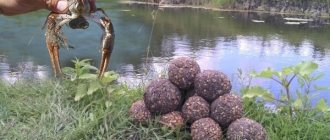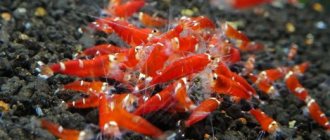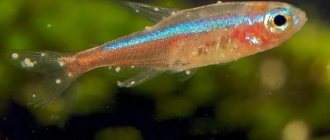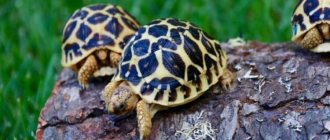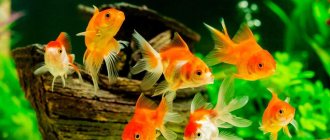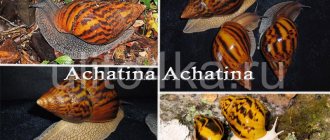How does the venom apparatus of amphibians work?
In the process of evolution, amphibians developed glands that secrete skin secretions. In toads, the suprascapular areas of the skin, which have the shape of ovals and protrude above the general surface of the skin, are especially important. These are suprascapular, or parotid glands, located on the sides of the head and secrete a poisonous secretion.
The suprascapular skin glands of toads have a structure typical of all amphibians - cellular, alveolar. Each such gland on average consists of 30-35 alveolar lobes. The alveolar lobule is a section of the gland containing a group of alveoli. The alveoli have their own excretory duct, which exits to the surface of the skin. When the toad is calm, it is usually closed by a plug of epithelial cells. The surface of the alveoli of the poisonous gland is lined on top with glandular cells that produce a poisonous secretion, which from them enters the cavity of the alveolar vesicle, where it remains until the need for defense arises. Fully formed amphibian venom glands contain up to 70 mg of poisonous secretion.
Unlike the suprascapular glands, ordinary small skin glands that secrete mucus have open excretory ducts. Through them, the mucous secretion reaches the surface of the skin, and, on the one hand, moisturizes it, and on the other, is a repellent.
The work of the suprascapular glands is simple. If, for example, a dog grabs a poisonous toad, it will immediately spit it out, and it’s good if it remains alive. When the gland is squeezed by the jaws, the poisonous secretion pushes out the epithelial plugs from the alveolar ducts and enters the dog’s oral cavity, and from there into the pharynx. Ultimately, severe general poisoning may occur.
The famous biologist-naturalist F. Talyzin described a case when a live toad was thrown into a cage with a hungry hawk. Naturally, the bird immediately grabbed it and began pecking. However, she suddenly recoiled sharply, hid in the corner of the cage, where she sat for some time, ruffled, and died a few minutes later.
For the toads themselves, the poison is not dangerous; on the contrary, it is a reliable means of protection. No one will dare to feast on such prey, except perhaps a ring-necked snake or a gigantic salamander - for them the toad’s poison does not pose a danger.
Poisonous tailless amphibians of Russia
In the European part of Russia and in the south, up to the Black Sea, as well as in the Crimea, you can meet amphibians from the spadefoot family (Pelobatidae). The pungent smell of the poisonous secretion of these amphibians resembles the smell of garlic. The venom of spadefoot toads is more toxic than that of, say, a green toad or a gray toad.
Common spadefoot spadefoot (Pelobates fuscus)
The habitat of the green toad (Bufo viridis) extends from North Africa to Asia and Siberia, passing through almost the entire territory of Europe. It is found everywhere near the southern borders of the European part of Russia and in Western Siberia. The green toad's skin has poisonous glands, but this is only dangerous for its enemies. The poison is not dangerous for other animals and humans.
Green toad (Bufo viridis)
In addition to the green toad, the gray or common toad (Bufo bufo) is widespread in Russia. It is dangerous for domestic animals - dogs, cats, and to a lesser extent for humans. The venom of this amphibian, accidentally applied to the mucous membranes of the eyes or mouth, causes inflammation and severe pain.
Common toad (Bufo bufo)
Another amphibian lives in the European part of Russia - the red-bellied firebird. It is widespread in Denmark and from southern Sweden to Austria, Hungary, Bulgaria, and Romania. It is dark gray on top, and the belly is bluish-black, with large bright orange spots (the so-called repellent coloration). Bright spots sharply highlight the toad against the green background of the grass and seem to warn that this frog is poisonous and should not be touched. In case of danger, if the toad does not have time to hide in the reservoir, it takes a characteristic pose: it arches its head upward, puts its front legs behind its back and puts its brightly colored spotted belly forward, thereby demonstrating its inviolability. And strangely enough, it usually works! But if this does not scare away a particularly persistent predator, the toad secretes a poisonous secretion, which is more poisonous than the secretion of spadefoots. The venom of the toad, like the venom of the spadefoot, has a pungent odor, causing watery eyes, sneezing, and pain when it comes into contact with the skin. More information about this amphibian can be found in this article.
Those who like to keep red-bellied toads at home need to know that they should never be placed in an aquarium with other amphibians, for example, newts - tailed amphibians or other frogs. They can die from proximity to the toad.
Red-bellied Firebird (Bombina bombina)
Caring parents and wonderful hunters
A leaf climber family usually consists of several females and only one male. This develops a sense of ownership in the male; he protects his territory in every possible way. Unlike other reptiles, females spawn on land rather than in water. Usually she lays 15-30 eggs in damp and dark thickets. This is where her mission ends.
The female leaves and after that it is the turn of the future father. He actively takes care of his offspring:
- pours water on them,
- protects
- turns over with hind legs.
Tadpoles appear after a few days. The caring father moves them on his back to the pond. In an aquatic environment they develop within 2-3 weeks. After this, small frogs appear, which go out onto land and begin an independent life.
However, after this, the young live for a long time with their parents or near them. This period drags on until the children start their own families.
Dart frogs are especially poisonous frogs.
But not only toads have poisonous skin glands. The most dangerous frogs for humans are frogs of the poison dart frog family (Dendrobatidae). The family includes about 120 species and almost all of them have poisonous glands that produce highly toxic substances.
Exotic lovers raise dart frogs in terrariums. After all, these tiny amphibians (their body length does not exceed 3 cm) are extremely beautiful, and their colors can be very diverse - blue, red, green, golden, polka dots, stripes...
How are these terribly poisonous frogs kept in terrariums, you ask? The thing is that the toxicity of these creatures, as a rule, is due to their diet: in nature, they eat small ants and termites and accumulate their poison. In terrarium conditions, deprived of “toxic feed”, frogs soon become practically safe.
Reticulated poison dart frog (Ranitomeya reticulata)
The dart frog family includes 9 genera, among which the genus of leaf-climbing frogs stands out.
Terrible leaf climber (Phyllobates terribilis)
In the jungles of South America and Colombia lives a tiny frog, only 2-3 cm long and weighing 1 gram. She can climb trees and sit on leaves. It is called the terrible leaf climber (Phyllobates terribilis), or “kokoe” (this is the name given to it by local residents). Kokoe is brightly colored and quite attractive, but it is best not to touch it. The skin glands of the leafhopper secrete a poison that poses a mortal danger to both large animals and humans. A tiny scratch on the skin is enough for the poison that gets there to cause rapid death. The terrible leaf climber, as if knowing that he has nothing to fear, does not hide like his relatives, but calmly moves in broad daylight in the tropical forests of Guiana and Brazil. These tiny frogs do not require large bodies of water. The water accumulated on the plants after the rain is enough for them. Their tadpoles also develop here.
Terrible leaf climber (Phyllobates terribilis)
The poison secreted by the skin glands of leaf climbers has long been used by Indians to lubricate arrowheads. A small scratch caused by such an arrow is enough for the victim to die. Before touching such a frog, the Indians will always wrap their hands in leaves.
Since the cocoa frog is very small, it is almost impossible to detect it among the dense greenery of the tropical forest. In order to catch it, the Indians, who can perfectly imitate the inhabitants of the tropical forests, lure it out by imitating the cry of this frog. They make sounds familiar to her for a long time and patiently, and listen to see if there is a response cry. When the catchers determine the place where the amphibian is located, they catch it.
It has been estimated that the poison of one frog is enough to turn the tips of at least 50 arrows into deadly weapons.
The symptoms of poisoning from the poison of the terrible leaf climber are reminiscent of the symptoms when the juice of one of the plants growing in the tropical forests of the same regions gets into the wound. This plant is called curare, and the effect of the poison on the body is similar to the effect of the juice of this plant - curare-like. The poison used to treat the arrows is called “deadly poison.” It acts very quickly, paralyzing the respiratory muscles, resulting in the victim dying from respiratory arrest.
Ash-striped leaf climber (Phyllobates aurotaenia)
Birds that get burned by yellow dart frogs don't eat white ones
Rice. 1.
The yellow and white morphs of the spotted poison dart frog are the main subject of study in the article under discussion. Photos from scienceblogs.com and en.wikipedia.org
More recently, in the journal PNAS
An interesting article was published on warning coloration in dart frogs. These amphibians are poisonous and, so that they are not eaten in vain, have identifying spots of bright colors. In theory, it should be convenient for them to “unify” the coloration within their species - this will make it easier for predators to learn the warning signal. But poison dart frogs have morphs with spots of different colors, including two that are similar: the more numerous have yellow spots, the less numerous have white spots. The authors of the article offer several “justifications” for the stable existence of both morphs, but the main conclusion is this: the more common yellow morph may help the rare white morph survive, since predators are so afraid of the common yellow frogs that they also try not to eat the rare white ones.
Warning (aposematic) coloration is a common way of communicating to other animals that they are poisonous. Memorable bright spots or stripes help both their owner and predators: the former do not have to spend their own lives proving their complete inedibility, and the latter quickly learn to identify and avoid dangerous victims. Well-known examples of animals with warning colors are coral adders, wasps, and poisonous frogs of South America.
The connection “color - toxicity” is so well remembered that it cannot but lead to the appearance of scammers. These animals do not use strong poisons, but they look so similar to poisonous ones that predators avoid them. Of course, they try to be as similar as possible to the original species and are found where there are many representatives of this species - otherwise there is no point in imitation and there is no point in maintaining this protective mechanism. For example, in the absence of coral adders, the harmless snakes “mowing” under them lose their bright coloring (Without coral adders, the pseudocoral snakes imitating them lose their striped color, “Elements”, 09/06/2017).
But what happens when a new morph with a different color appears within one poisonous species? The idea is that if animals with unusual colors are rare, then predators have little chance of remembering them. Therefore, representatives of this new morph are protected worse than usual and must be purged by selection. However, in nature there are species with variable warning colors.
So, in the jungles of South America live spotted dart frogs ( Dendrobates tinctorius
).
They inhabit the lower tier of tropical forests and are distinguished by a riot of colors and rare poisonousness. Terrarists love them for this brightness, coming up with poetic names for different morphs like “Blue Powder” or “New River”. The main color variants of these frogs are spots of yellow, blue or white on a darker background, and often the legs are painted in one color, the back in another, and the belly in a third (Fig. 1). Previously, the authors of the discussed article showed that color can play a role in the sexual relationships of poison dart frogs (B. Rojas, JA Endler, 2013. Sexual dimorphism and intra-populational color pattern variation in the aposematic frog Dendrobates tinctorius
), but the main function of bright spots is all- still warning predators about toxicity (AA Comeault, BP Noonan, 2011. Spatial variation in the fitness of divergent aposematic phenotypes of the poison frog,
Dendrobates tinctorius
).
The toxicity of frogs is formed due to the release of batrachotoxins from the skin - alkaloids widely used by other genera of frogs. Amphibians obtain substances necessary for the synthesis of toxins from food and for this they eat a specific diet of ants and mites (RA Saporito et al., 2007. Oribatid mites as a major dietary source for alkaloids in poison frogs). Therefore, newborn dart frogs and poison dart frogs with a terrarium diet are harmless - they have nothing to make toxins from (see D. B. Tikhonov, Poisons against ion channels).
Two populations of dart frogs of different colors in northwestern French Guiana were selected as the subject of the study under discussion. Using their example, scientists decided to find out the reasons why color polymorphism exists. In addition to the color of the stripes on the back (yellow or white), the populations differed in numbers: frogs with a yellow pattern on the back were numerous, and there were fewer individuals with a similar white pattern living 30 km away. The test showed that the level of migration between these two populations is negligible and that they are genetically isolated from each other.
Rice.
2. Top:
two yellow morphs of dart frogs,
bottom:
plasticine models of these frogs, used in the work of BP Noonan, AA Comeault, 2008. The role of predator selection on polymorphic aposematic poison frogs
To test the relationship of predators to different morphs, the scientists conducted a classic test for studying aposematic coloration, which tested the reaction of natural predators to multi-colored plasticine models simulating real frogs (Figs. 2 and 3). Figures with spots of different shapes were placed in the habitats of two populations, and then, using the imprints on plasticine, the number of attacks by predators was counted. In total, about two and a half thousand figures were placed. Of course, it is almost impossible to mold so many models by hand, so the scientists used a technique that speeds up this process: first, plasticine is stuffed into silicone molds, and then spots and eyes are separately attached to the finished frogs. In this case, the paws, like those of the original, turned out to be blue, and the spots differed in color (white, yellow) and shape (either they were stripes or covered the entire back).
Rice. 3.
Plasticine models of
Atelopus spumarius
showing signs of attacks from different predators: birds (
A
), mammals (
B
) and lizards (
C
). Image from DC Rößler et al., 2021. Sole coloration as an unusual aposematic signal in a Neotropical toad
In the territory of the white morph, scientists placed figures with three types of spots: normal for this territory (white stripes), irregular shape (white back) and irregular color (yellow stripes). In the territory of the yellow morph, yellow-striped, yellow-backed and white-striped frogs were distributed, respectively. This choice made it possible to separately evaluate the importance of the color and shape of the spot for birds, which, according to the authors, pose the main threat to poison dart frogs. Other predators like snakes and arthropods can also occasionally attack them, but they are guided not only by color, but also by smell. Therefore, their motives are not always obvious, and the researchers decided not to take them into account. At the same time, the question of who exactly eats (or rather, unsuccessfully tries to eat) poison dart frogs has not yet been thoroughly studied.
It turned out that the birds do not care about the shape of the spot, but they peck frogs of different colors with different frequencies - depending on what color they are used to (Fig. 4). In the yellow territory, white and yellow figures were attacked approximately the same number of times, and in the white territory, the yellow ones unexpectedly gained an advantage: traces on figures of an unusual yellow color were found two and a half times less often. It is worth noting that in absolute values the difference is actually not very large, although it is significant: 9 versus 23 figures.
Rice.
4. A
- areas of two studied populations of poison dart frogs: white (W) and yellow (Y).
The arrowheads
indicate that there is little or no gene transfer between populations.
B
- the number of attacks per figure of the color of the local (
gray bars
) and the second population.
Figure from the discussed article in PNAS
The fact that white frogs “lost” to yellow ones in their territory may seem strange. Unfortunately, the work discussed does not show who exactly tried to eat poison dart frogs: different birds have different habitats, they can search for prey and see it in different ways. So the influence of these third-party factors cannot be completely excluded. Now, in order to avoid such uncertainty, researchers have come up with the idea of isolating DNA from bitten figurines and using it to identify the attacker (DC Rößler et al., 2021. Predator identification from salivary DNA left on artificial prey), but in this work such an analysis was not carried out.
Having discovered a imbalance in the number of attacks, the authors of the article decided to look at how exactly birds learn not to eat dart frogs and how much they can generalize their experience and transfer it to previously unseen morphs. It was not possible to find out this in the field, so the authors tested this hypothesis using model birds of prey - chickens. Chickens are good at distinguishing colors, although it is not entirely clear how much the experiments with them reflect the actual behavior of the birds of French Guiana.
In the experiment, chickens were taught to distinguish between common tasty mealworms and less edible worms based on what color a frog was drawn on the backing of a Petri dish containing worms. The worms on the backing with a picture of a brown frog could be eaten without danger, but on the photographs of the white-striped and yellow-striped poison dart frog there were worms with bitter chloroquine. Hungry birds were first trained to distinguish between brown frogs and one of the colored morphs, and then tested what would happen if they were shown a second morph that they had never seen before.
Based on the training results, it turned out that the birds remembered the yellow-striped frogs better. Moreover, after training, the birds' fears extended to white-striped frogs, which they had not previously encountered. In the opposite direction, this generalization worked worse, so that after training on white-striped frogs, chickens often tried to peck a worm on a substrate with a yellow-striped frog.
This was consistent with the idea that yellow frogs protect themselves, and at the same time help white frogs survive due to the fact that the birds are afraid of them “at the same time.” Additionally, the researchers checked how toxicity affects the choice of birds: perhaps it is not the color, but the acuity of the sensations of the bird that has experienced the effect of alkadoids. For this purpose, two experiments were carried out - direct recording of alkaloids and their tolerance by birds. Based on the results of the first, it turned out that the skin of white dart frogs contains more alkaloids and they are more diverse. The authors again conducted the second experiment on models, and rather unexpected ones: they monitored the appetite of blue tits, which were fed grains soaked in frog skin extract. It turned out that, although white frogs are more poisonous, tits do not attach much importance to this and eat seeds soaked in their extract with even less disgust compared to seeds with yellow dart frog extract, and even more so compared to control seeds that were not soaked in anything.
Although the protective coloration of yellow dart frogs is clearly more effective, the results of the experiments suggest what allows the rare white frogs to persist. From experiments with chickens and plasticine models, it is clear that they are well protected from predators in the presence of another strong aposematic signal: birds spread their negative experience from yellow frogs to white ones.
At the same time, birds still learn to avoid white frogs, and they themselves are poisonous enough for the signal to be remembered - this is evident from most experiments. The authors suggest that these frogs are at a suboptimal peak in the fitness landscape, and cannot jump to the optimal peak for survival due to the lack of gene exchange with the yellow population.
The second conclusion that the authors made is rather methodological. It is logical to think that the more poisonous the frog, the less edible it is. Experiments with tits and direct measurement of the amount of alkaloids demonstrated that although this connection exists, it is not always so straightforward. Therefore, using only the alkaloid composition to assess the toxicity of frogs, as is usually done, is not entirely correct.
Despite the fact that scientists carried out a number of interesting experiments and tried to comprehensively investigate the issue that interested them, the study under discussion has a number of not very clear parts. Thus, the authors are silent about which birds are trying to peck poison dart frogs. Depending on their preferences, habitats and the size of their hunting areas, the interpretation of the experience with plasticine models may vary. The second question, related to the first, is how correct it is to generalize the results obtained on tits and chickens to all birds, and, in particular, to unknown predators of French Guiana. However, the validity of such a generalization cannot be dismissed out of hand: experiments on model birds allow us to assume that similar learning and taste preferences may take place in the wild.
Finally, to interpret the results, it would be good to understand the relationship of these two populations - how related they are to each other and who their common ancestor was. If these data were available, it would be possible to establish which of the phenotypes appeared earlier. The authors plan to do this, and we hope that their further research will allow us to better understand the nature of the warning color polymorphism.
Source:
J. P. Lawrence, Bibiana Rojas, Antoine Fouquet, Johanna Mappes, Annelise Blanchette, Ralph A. Saporito, Renan Janke Bosque, Elodie A. Courtois, and Brice P. Noonan.
Weak warning signals can persist in the absence of gene flow // PNAS
. 2021. DOI: 10.1073/pnas.1901872116.
Vera Mukhina
Venom of tailless amphibians
In general, the venom of frogs and toads is primarily a protein, which includes highly active compounds, enzymes, catalysts, etc. It contains chemicals that act on the nervous system, mainly the peripheral one, as well as proteins that cause the destruction of erythrocytes - red blood cells. The poison contains substances that selectively act on the heart.
Interestingly, these toxins have a special biological significance for the amphibians themselves. Cocoa, which has a bright, provocative color that scares away predators, has an exceptionally strong poison in its effect. Frogs, which are quite closely related to cocoa, but have a calm, inconspicuous coloration, generally lack a poisonous secretion.
The presence, or, conversely, absence of certain substances in the skin of frogs depends on the location and conditions of their habitat. For example, amphibians that spend a lot of time on land have chemical components that can protect them in a terrestrial environment, unlike animals that prefer a longer aquatic lifestyle. It is interesting that the suprascapular glands of toads contain components in the venom that are cardiotoxic, i.e. acting primarily on the heart. Apparently, this feature of their poison is due to their terrestrial lifestyle and serves as protection against attacks by predators. Even snakes will not eat a brightly colored toad, and if they grab it, they will try to throw it back. This is despite the fact that many snakes have their own venom glands and have a certain natural immunity to venom.
The poison of tiny leaf climbers is sometimes dangerous for the frogs themselves. It is so strong in its effect that, if it accidentally gets into a scratch on their skin, it can kill the frog itself. Apparently, the frogs that produce it are not exposed to the poison under normal living conditions. This is explained by the fact that the cells producing the poison are well isolated from other tissues and the toxin cannot spread throughout the body.
There are practically no antidotes against leaf climber poison. The skin of an adult frog, less than 50 mm long, contains a very toxic substance, batrachotoxin, first isolated from the venom of the Colombian frog. Batrachotoxin is a chemical found in the skin venom of five species of frogs native to southern Central America and northwestern South America. Currently, scientists have been able to artificially obtain this substance in the laboratory, and its toxic properties are not inferior to natural ones.
Keeping at home
Many of us think that keeping such reptiles at home is very dangerous. However, in captivity, these 'terrible' creatures lose their poisonous properties . This is due to the daily diet of amphibians. Homemade food will not contribute to the accumulation of toxic substances in the frog's body.
In their natural habitat, poisonous frogs feed on insects that contain dangerous toxins. The diet of domestic frogs consists of other foods, so they gradually lose their toxicity.
In captivity, such creatures can live up to 7 years, and in ideal conditions, their lifespan reaches 10 years .
What happens when poisoned by frogs and toads?
The venom of tailless amphibians acts mainly on the circulatory and nervous systems and the heart. Of course, in order to be poisoned, say, by the poison of a toad, you must take it into your mouth. Naturally, no normal person would do this, but poisoning with the venom of the terrible leaf climber is known. It is enough to pick up an amphibian with your bare hands, and if there are cuts, abrasions and cracks on the skin, this can lead to severe poisoning and even death. Just imagine the state of a person when, as a result of the action of poison on the neuromuscular system, breathing begins to weaken. The inhalation becomes shallow and superficial. Gradually, oxygen deficiency occurs, and the victim begins to suffocate. The heart and brain also suffer from a catastrophic lack of oxygen, convulsions occur, and then death from respiratory arrest.
The mechanism of action of leaf climber poison is as follows. At the border of nerve and muscle there is a small special plate that has the properties of both nervous tissue and muscle tissue, which is why it is called the neuromuscular synapse, or connective tissue. The intercostal muscles also have such plates, which, together with the diaphragm, carry out the movement of air when inhaling into the lungs and when exhaling outward, i.e. carry out the breathing process. It is on these plates that the action of the “cocoe” poison is directed. By turning them off from work, the poison thereby stops the transmission of the signal from the nerve to the muscle. Naturally, the signal cannot pass through the disconnected plate; as a result, the muscles do not receive a signal from the nervous system to begin contraction and also stop working, i.e. breathing stops.
There are isolated cases of human death from toad poison. One of these cases occurred due to the fault of a healer, who advised the patient to get rid of a toothache in a very unique way: take a dried toad skin into your mouth and press it to your gums. This advice cost a man his life. Experts are well aware that in dried toad skin, poison can persist for up to ten years, practically without losing its properties.
Share with your friends:

